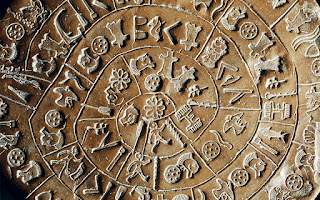Linear A & B
To begin our study of potential linguistic changes in a colonial environment we must travel back to a time of two specific written languages we refer to as Linear A and Linear B.
Linear A and the derivative Linear B are two very old languages and they have been dated to the Mediterranean period of 2500–1200 B.C.E.
Linear A is one of the two currently un-deciphered ancient writing systems and is believed to have been used in palaces and religious settings while Linear B had a more common usage and seems to have been used as a language of trade. Deciphered examples appear to be lists of items for barter, numbers and even fractions.
Here we must also mention the existence of a third, undeciphered, script, Cretan Hieroglyphic. An example of Cretan Hieroglyphic, is the famous clay Phaistos Disk, with its spiral writing nowadays believed to run from the circumference to the centre.
According to a Dr Owens[1], (Ph.D, History and Classics at University College, London, followed by an MA in Greek Literature and History, and also Philosophy), the difference of phonetic patterns between Linear A and B is only about 10%; in other words, the two scripts are about 90% similar. This is important to remember when considering colonial migrations to space as this 10% variant is explainable in terms of migration.
The language of the Minoans (
Dr Owens research into inscriptions in Linear A (as carved on offering tables found in the many peak sanctuaries on the mountains of Crete), offer a clear relationship between Linear A and Sanskrit, the ancient language of India. There is also a connection to Hittite and Armenian.
These languages of Minoan and Greek are considered to be
different branches of Indo-European, which is a vast family that includes
Modern Greek and the Latin of Ancient Rome. The Minoans are believed to have moved
from Anatolia, also known as Asia Minor, to the
[1] lecture by Gareth Owens, Ph.D., on the subject of “The Minoan language: scripts and languages of Minoan and Mycenaean Crete”

Comments
Post a Comment